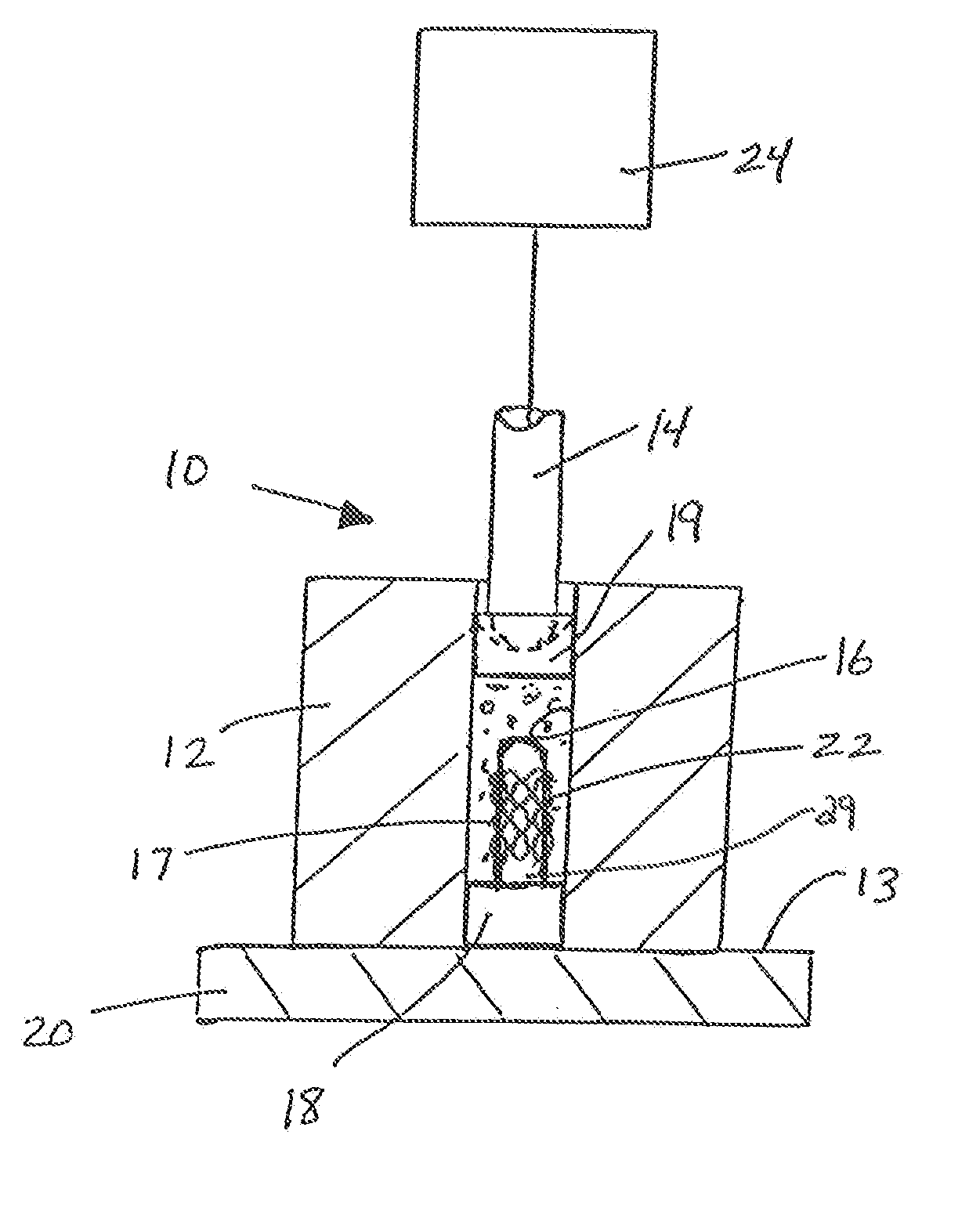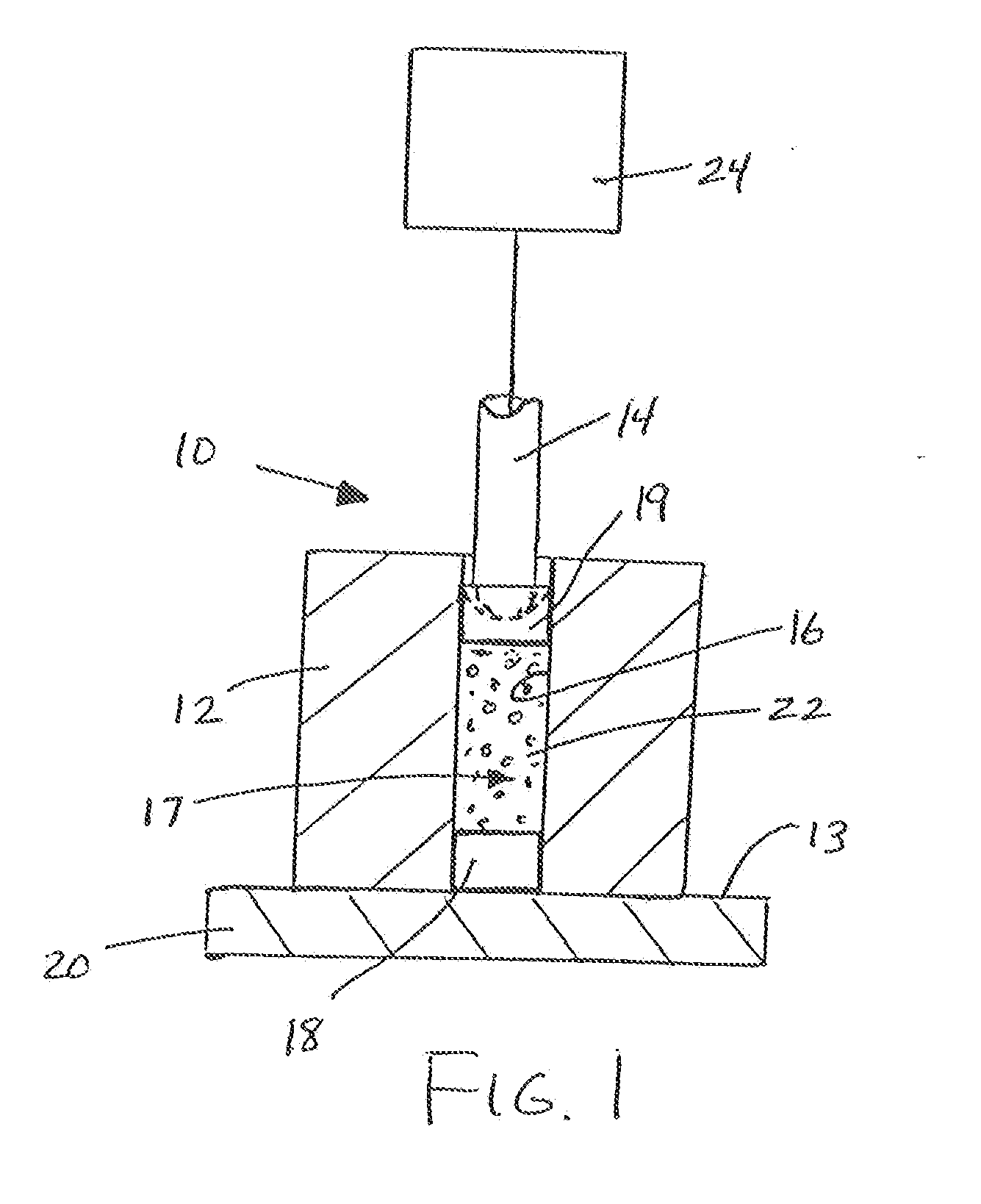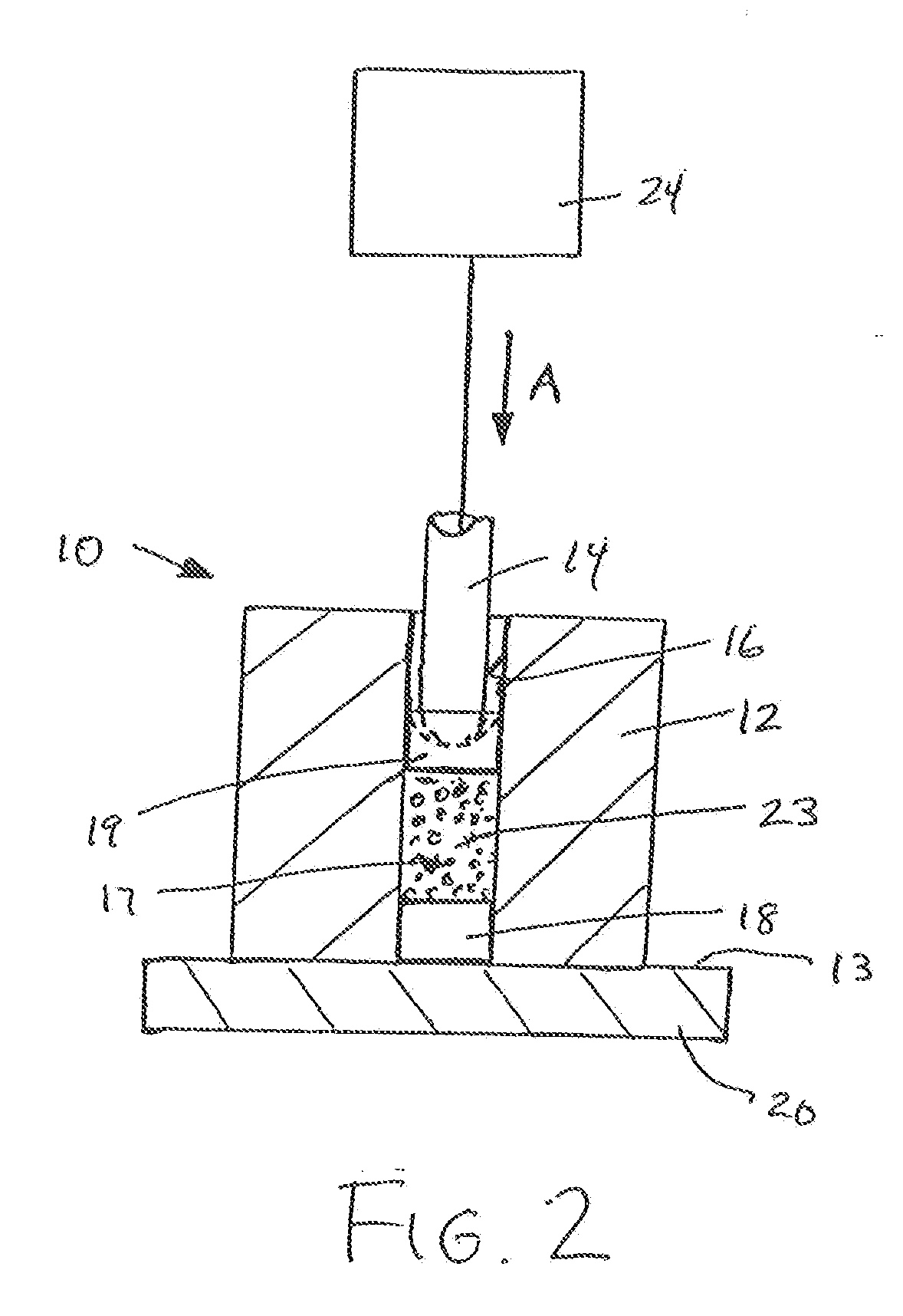Protein matrix materials, devices and methods of making and using thereof
a technology of protein matrix and materials, applied in the direction of prosthesis, peptide/protein ingredients, antibacterial agents, etc., can solve the problems of uncontrollable release, unsuitable device for controlled drug delivery, and many previously developed devices that do not offer sufficient strength, stability and support, etc., to reduce, if not eliminate, the risk of residual solvent toxicity or adverse tissue reaction
- Summary
- Abstract
- Description
- Claims
- Application Information
AI Technical Summary
Benefits of technology
Problems solved by technology
Method used
Image
Examples
example 1
Preparation of a Drug Delivery Device Comprising a Biodegradable Protein and an Enzyme
[0258]The enzyme xanthine oxidase was dissolved in deionized water to 0.28 units / 100 μl. This xanthine oxidase solution was mixed in with 50 mg protein (SELP 7) to form a coatable composition. The composition was then coated on a glass surface to form a film with a thickness of from about 0.1 to about 0.3 mm. The coated film was allowed to dry at room temperature until dry enough so as to be cohesive, i.e., to a solvent content of from about 50% to about 70%. The resulting film was rolled up, placed in a 3.5 mm diameter mold and compressed at 1750 psi for 2 minutes to form a 3.5 mm diameter cylinder, approximately 5 mm long, utilizing the compression molding device discussed hereinabove. The resulting cylinder had a solvent content of approximately 30% to about 60%. This cylinder was cut into four equal pieces so that each piece contained approximately 0.07 xanthine oxidase units / piece. These piece...
example 2
Preparation of a Drug Delivery Device Comprising a Biodegradable Protein and an Enzyme
[0259]The enzyme superoxide dismutase (SOD) was dissolved in deionized water to 30.0 units / 100 μl. This SOD solution was mixed with 50 mg (SELP7) to form a coatable composition. The composition was then coated on a glass surface to form a film with a thickness of from about 0.1 mm to about 0.3 mm. The coated film was allowed to dry at room temperature until dry enough so as to be cohesive, i.e., to a solvent content of from about 50% to about 70%. The resulting film was rolled up, placed in a 3.5 mm diameter mold and compressed at 1750 psi for 2 minutes to form a 3.5 mm diameter cylinder, approximately 5 mm long, utilizing the compression molding device discussed hereinabove. The resulting cylinder had a solvent content of from about 30% to about 60%. This cylinder was cut into four equal pieces so that each piece contained approximately 7.5 units of SOD per / piece. These pieces were frozen at −80° ...
example 3
Preparation of a Drug Delivery Device Comprising a Biodegradable Protein and Lipospheres
[0260]Lipospheres with 3.6% of the local anesthetic bupivacaine were made as described in U.S. Pat. No. 5,188,837. From about 200 million to about 400 million of these lipospheres were then suspended in 150 μl deionized water. This suspension was then mixed with 30 mg SELP7 to form a coatable composition. The composition was then coated onto a glass surface to form a film with a thickness of from about 0.1 to about 0.3 mm. The coated film was allowed to dry at room temperature until the film was dry enough so as to be cohesive, i.e., to a solvent content of from about 50% to about 70%. The resulting film was rolled up, placed in a 3.5 mm diameter mold and compressed at 1750 psi for 2 minutes to form a 3.5 mm diameter cylinder, approximately 4 mm long, utilizing the compression molding device discussed hereinabove. The resulting cylinder had a solvent content of from about 30% to about 50%. Four c...
PUM
| Property | Measurement | Unit |
|---|---|---|
| pressure | aaaaa | aaaaa |
| thickness | aaaaa | aaaaa |
| thickness | aaaaa | aaaaa |
Abstract
Description
Claims
Application Information
 Login to View More
Login to View More - R&D
- Intellectual Property
- Life Sciences
- Materials
- Tech Scout
- Unparalleled Data Quality
- Higher Quality Content
- 60% Fewer Hallucinations
Browse by: Latest US Patents, China's latest patents, Technical Efficacy Thesaurus, Application Domain, Technology Topic, Popular Technical Reports.
© 2025 PatSnap. All rights reserved.Legal|Privacy policy|Modern Slavery Act Transparency Statement|Sitemap|About US| Contact US: help@patsnap.com



